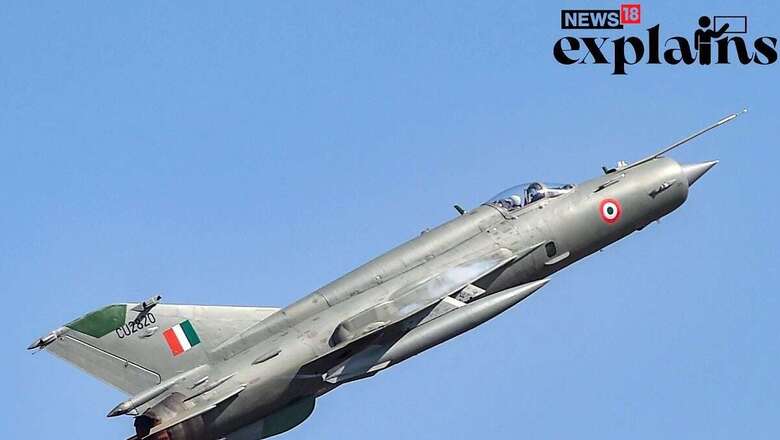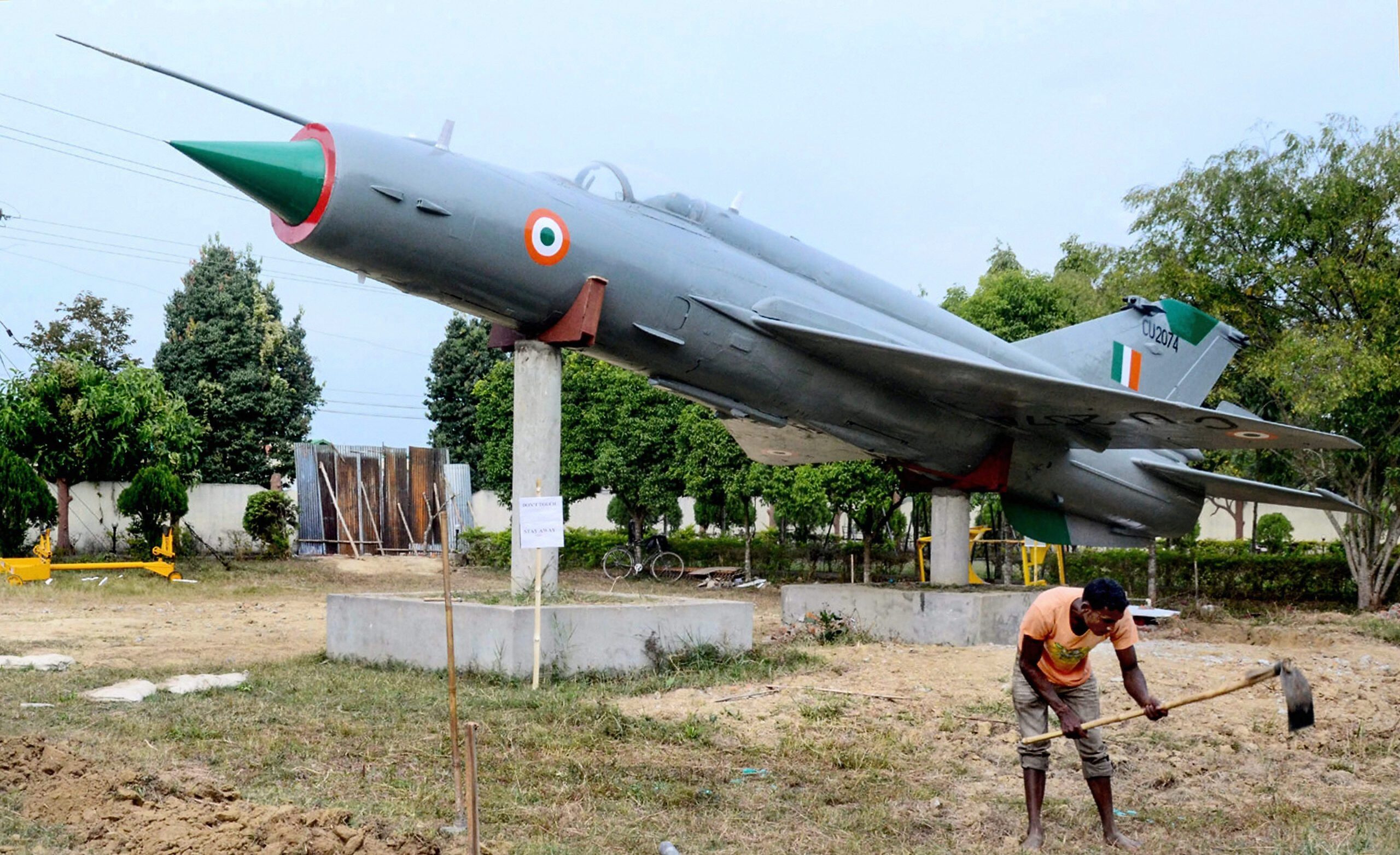Goodbye MiG-21! The Journey of Russian Jet from Being Backbone of IAF to 'Flying Coffin' | EXPLAINED

views
India is finally bidding adieu to the legendary Russian-origin MiG-21, which was once an integral part of India’s defence legacy in the last six decades. The iconic MiG-21 jets, which were once the backbone of the Indian Air Force (AIF), participated for the last time at the annual Air Force Day parade in Prayagraj on Sunday.
The event, which celebrated the 91st anniversary of the IAF, marked the end of an era as the Indian Air Force is rolling out the process to phase out the remaining three squadrons of the aircraft.
The Russian-made aircraft is set to be replaced with indigenously-developed Tejas Mark-1A aircraft from 2025 onwards. A timeline has been finalised to phase out the Mig-21s.
Chief of Air Staff Air Chief Marshal V R Chaudhary suggested that the remaining squadrons of the MiG-21 jets will be phased out by next year.
All About MiG-21
The MiG-21 is a Soviet-era single-engine, single-seater multirole fighter that once formed the backbone of the IAF fleet. The MiG-21s were initially designed as interceptor aircraft and underwent numerous upgrades to perform various fighter aircraft roles including ground attack.
Currently, the IAF has three MiG-21 squadrons with a total of around 50 aircraft. After its induction in the early 1960s, the IAF procured more than 870 MiG-21 fighters of different versions to boost its overall combat prowess.
The MiG-21 Bison, an upgraded version of the MiG-21bis, was first inducted into service in 1976. According to a report in Hindustan Times, over 100 MiG-21s in the IAF were upgraded to Bison in 2006.

Apart from India, the fighter jet has served in 60 countries over the course of 60 years. It holds the record for being the most-produced supersonic jet aircraft in aviation history, the most-produced combat aircraft and the longest production run of a combat aircraft.
Longest Serving Fighter Jets
MiG-21 has been designed by the Mikoyan-Gurevich Design Bureau of the then Soviet Union and India’s longest-serving fighter plane. India got its first MiG-21 in 1963 and to bolster the combat potential of the country, 874 variants of the supersonic fighters were inducted, making the country one of the largest operators of MiG-21s outside the USSR.
In February 2019, then Wing Commander Abhinandan Varthaman of the No 51 squadron based in Srinagar had downed a Pakistan Air Force F-16 aircraft while flying a MiG-21 Bison.
The MiG-21s have demonstrated their effectiveness in several wars including the 1971 Bangladesh Liberation War, the 1965 war and the 1999 Kargil War with Pakistan.
Why is India Phasing out MiG-21?
After its induction in the early 1960s, the IAF procured more than 870 MiG-21 fighters to boost its overall combat prowess. However, the aircraft has a very poor safety record.
Several MiG-21s have crashed in the recent past turning the spotlight on India’s longest-serving fighter plane, its safety record, and the plans to replace the ageing jets.
As of May this year, the IAF lost 400 MiGs in crashes since 1971, losing over 200 pilots and close to 50 civilians. In 2012, former Defence Minister AK Antony had said in Parliament that more than half of the 872 MiG aircraft purchased from Russia had crashed, in which, more than 200 persons had lost their lives.
Due to the high rate of accidents and the maximum number of peace-time killings by any fighter jet, the aircraft earned the nickname of ‘Flying Coffin’.
As per the data compiled by the IAF, the accident rate of the MiG-21s in the 1990s was 2.89 per 10,000 flying hours.
However, military experts claim that MiG-21s have crashed more than any other fighter jets because they comprise the bulk of the IAF’s inventory.
Tejas Mark-1A aircraft to take over
The Indian Air Force is set to replace the ageing Mig series fighters with around 100 additional Light Combat Aircraft (LCA) Tejas Mark-1A fighter jets. This is in addition to the Rs 48,000-crore deal signed with Hindustan Aeronautics Limited (HAL) in 2021 to procure 83 such jets.
Tejas Mark-1A is an indigenously designed, developed and manufactured modern 4-plus generation fighter aircraft with more than 65 per cent indigenous components. It is also deployed with an indigenously developed Active Electronically Scanned Array (AESA) radar, Beyond Visual Range (BVR) Missile, modern Electronic Warfare (EW) Suite and Air-to-Air Refuelling (AAR) capabilities to meet the operational requirements of the IAF.
As per reports, around 300 Tejas Mark-1A fighter jets are going to be inducted into service in the next few years.



















Comments
0 comment